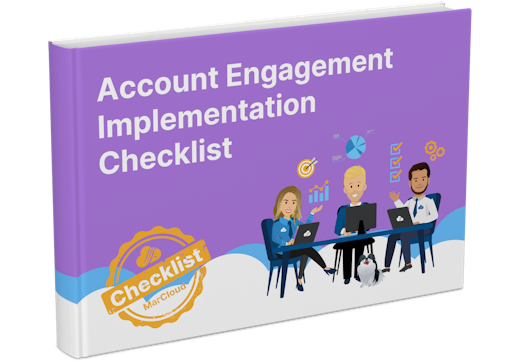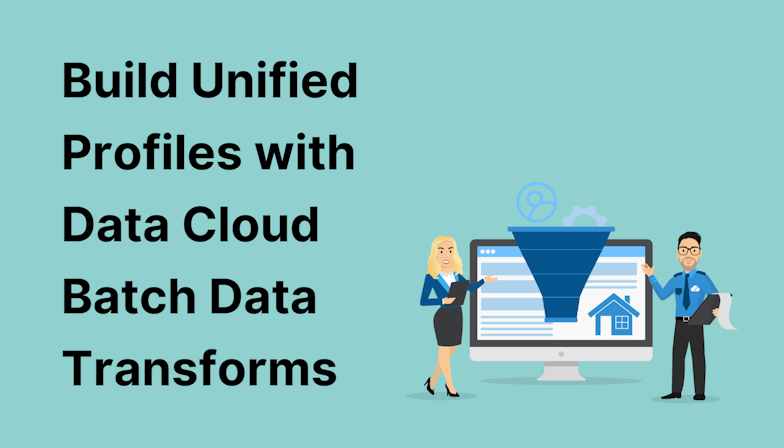This blog was written before Pardot was renamed to Marketing Cloud Account Engagement. You can read more about the name change and what it means here.
Choosing to implement Pardot as your marketing automation platform of choice is a big decision as it takes a lot of time researching and planning how the platform will fit within your organisation. Now the strategic decision has been made, it's time to implement the system and it's a process that requires a lot of care when executing. Which is why we've created a free Pardot implementation guide which you can go ahead and download. Then, read on for more implementation tips!
To extract the most value from the system, you'll need to configure the system bespoke to your business. Sure, you could use Pardot with it's out of the box settings, but you didn’t just spend all of this time and resource for mediocre usage, you want a lead generating machine!
Here’s what you need to know about a Pardot implementation.
1. Make the relevant people in your organisation aware of their role
Pardot is a marketing tool, but you’re going to need help from people within other departments. Depending on the size of your company, the number of people will differ. The core groups are below:
Marketing - If this isn’t you reading this, then you’ll need to make sure the marketing team are fully bought into this as they’re going to be the ones driving Pardot activity! Automation requires an ongoing supply of email copy, content downloads, landing pages, design work etc. The team will need to be able to have the resource to schedule this in. Make sure you have at least one designated Pardot user so that they can manage the platform and ensure all the features are being utilised and the automation is all connected properly.
Webmaster - The webmaster will be responsible for embedding the tracking code on the website and placing inline frames (iframes) for forms and dynamic content onto the website.
IT team - These guys will help you set up vanity URLs for your landing pages (also called CNAMEs). They’ll also add the SPF/DKIM record onto your domain – more on this further down the article.
Sales team - Pardot was built to align marketing and sales to enable both teams to be more productive and increase revenue, so it makes sense to bring sales into the implementation process so they can be introduced to a new process early on. They’ll be a great help in setting up the lead assignment process and defining what a MQL (marketing-qualified lead) looks like.
CRM Admin - The person in charge of the CRM will need to set up permissions and the Pardot application within Salesforce (or other CRM), set up the custom fields/layout and adding the activities iframe to the prospects record within the CRM.
Senior management – It’s important that management is aware of your Pardot project for a number of reasons. Firstly, it will ensure that budgets aren’t diverted from other marketing projects and this is treated as a company-wide investment. Secondly, it’s a good idea to make clear that developing Pardot is a process. If you break the project down into stages so that you can show clear progress, it will make life much easier in the long run. Finally, you will need to explain that key metrics are likely to change due to the marketing process and criteria being driven by Pardot. They may want to create new reports and dashboards to reflect the change.
2. Technical set up
It’s not too difficult to become overwhelmed by the functionality of Pardot, so it’s best to list everything that needs to be addressed prior to carrying it out. For your convenience, I’ve helped you to make a good start below.
- Tracking Code: The webmaster will need a piece of code from you to place on each page of the website. When first starting out, it’s worth using the default campaign Website Tracking’. You can find the code you need by heading to Marketing>Campaigns, clicking into Website Tracking and then selecting View Tracking Code’.
- SPF & DKIM: This is incredibly important for email deliverability. These essentially act as a permission for Pardot to send via your domain, so make sure these are set up prior to sending any emails. You can find out the information you need within your Pardot Admin>Overview page.
- Custom Page Scoring: Right from the outset, you’ll want to identify the priority pages on your website. There will already be a baseline scoring system in place which is built into Pardot, but it’s important you set up custom scoring for these pages so you can see prospects who are showing obvious buying signals.
- CNAME: A huge benefit of Pardot is being able to build landing pages into the platform. However, as they’re hosted on Pardot you’ll need to create a CNAME (vanity URL) for brand continuity. For example, our website is www.marcloudconsulting.com so we might opt for www2.marcloudconsulting.com or wvw.marcloudconsulting.com as a CNAME. It’s up to you to decide what would work best.
- Whitelist your IP: To ensure all test emails don’t get caught up in your company SPAM filter, whitelist your IP within Pardot.
3. Build your email templates, forms and landing pages into Pardot
Once the initial technical setup is complete, you can start migrating your assets over to Pardot. You might need some help from IT when setting up the form templates and landing pages as they may need to be re-coded. The benefit of hosting these assets within Pardot will become clear when you start to build complex automation programmes. For example, you can treat prospects who view your landing page and do not convert differently to those who never viewed it at all - this isn’t possible when you host a landing page outside of Pardot.
Think about the customer journey when setting this up and how you want to be treating each prospect when they complete a particular action. Do you want to use completion actions, change scores, send an autoresponder email, add to a list, assign or notify a user? The functionality is there, so you can achieve whatever objective you set out to.
4. Import your prospects
This requires some thought prior to carrying out because it can be tricky to amend afterwards. Think about how you want to segment your prospects and whether you will be importing your current customer database as well. Set up static and dynamic lists so you can identify each segment of your database with absolute confidence. It’s a good idea to segment based on where each prospect is in the buying cycle so it’s easier to market to them more effectively.
Best practice for new prospects:
It’s important to understand how Pardot is best used for new prospects:
- Upload to Pardot and do not assign them to a user. Once a user is assigned, this will cause Pardot to believe that prospect is a MQL and will sync to the CRM. You don’t want to fill your CRM with brand new prospects who aren't qualified.
- Using a blended lead scoring & grading strategy, assign prospects once they fulfil a certain criteria.
- Use a field within your CRM to identify when a MQL becomes a customer so that this can be fed back into Pardot and they can move into a customer list, segmented from prospecting and treated differently.
5. Set up the CRM connector & Salesforce Engage
If you are using Salesforce, NetSuite, Microsoft Dynamics or SugarCRM, you can easily set up a connector within Pardot to connect them. If you are using a different CRM provider, then you will need to have a custom integration written using Pardot's API. If you’ve purchased Salesforce Engage, it’s a good idea to get this set up now too. Check out Pardot’s documentation on this here.
6. Upload your content assets
Whitepapers, checklists, guides, infographics etc. all should be hosted in Pardot so you can track downloads and views. That way, each time a prospect engages with your content, it will be logged in their activity history. You’ll also be able to trigger notifications and custom scoring when someone interacts with this content. Tip: it pays to keep your account organised from the very start - we recommend using things like folder structures and correct naming conventions to keep your account tidy.
7. Lead assignment and distribution
As I mentioned earlier, it’s important that you meet up with sales to discuss the best lead assignment and distribution process. Do you assign leads to sales based on a certain location or characteristic? Maybe you assign leads from a larger company to more experienced members of your team? Whatever it is, it can be automated within Pardot. Be sure to map out the process and have all teams agree on the process.
8. Connect your other accounts
Whether it’s Facebook and LinkedIn or GoToWebinar and Google AdWords, you’ll want to start integrating your other platforms into Pardot to allow for a more succinct overview of your marketing efforts and an integrated approach.
That's how to kickstart your marketing automation set up but if this beginner's Pardot implementation guide went a little over your head, feel free to take a look at our implementation services too.

Tom Ryan
Founder & CEO of MarCloud, Tom has been on both sides of the fence, client-side and agency, working with Salesforce platforms for the best part of a decade. He's a Salesforce Marketing Champion and certified consultant who loves to co-host webinars and pen original guides and articles. A regular contributor to online business and marketing publications, he's passionate about marketing automation and, along with the team, is rapidly making MarCloud the go-to place for Marketing Cloud and Salesforce expertise. He unapologetically uses the terms Pardot, Account Engagement and MCAE interchangeably.
More by Tom RyanFeatured resource

Pardot Implementation Checklist
Starting out with Marketing Cloud Account Engagement, formerly known as Pardot, is no easy feat. Set yourself up for marketing automation success with this step-by-step checklist for implementing Account Engagement (aka Pardot). Work through the stages and get in touch if you need support!
Download now


